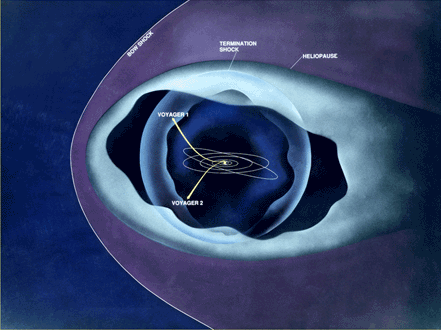termination shock

Structures at the edge of the solar system.
The termination shock is the shock front, also known as the terminal shock, that surrounds the Sun at an estimated distance of 80 to 100 astronomical units (AU). It marks the transition where the solar wind slows from supersonic to subsonic speed, and where there are large changes in the orientation of the Sun's magnetic field and the direction of flow of charged particles.
In 2003, data sent back by Voyager 1, from a distance of 90 AU, indicated that it might have reached the region of the terminal shock. However, two papers published simultaneously in the journal Nature in November 2003 offered differing interpretations. Louis Lanzerotti of Bell Laboratories and the New Jersey Institute of Technology said his team had found "compelling argument" that Voyager I was "in the vicinity of the termination shock" and had even passed briefly into the heliopause. However, according to Frank McDonald of the University of Maryland, the probe was "not there yet". Beyond the termination shock lies the edge of the solar magnetosphere known as the magnetosheath.


